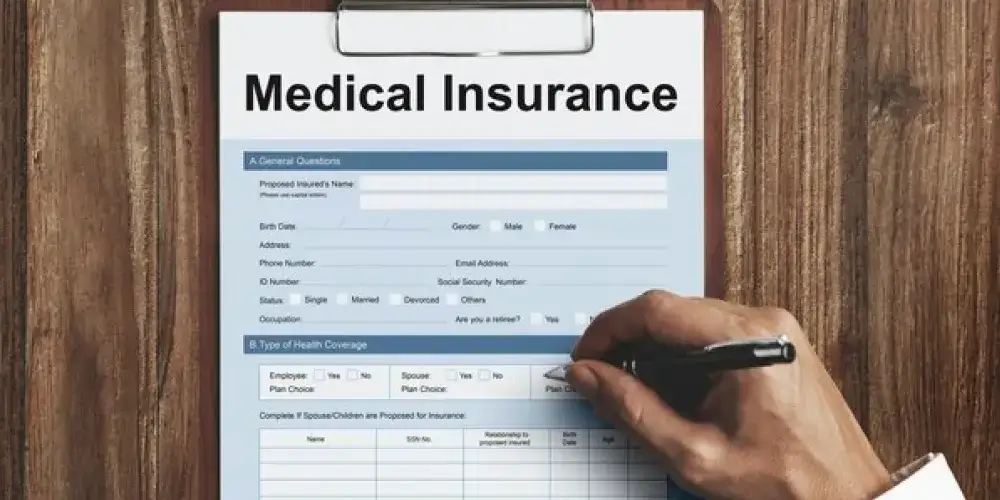

Navigating the Health Insurance Claims Process
07/05/2024 Orly Smith 1854
Understanding how to navigate the health insurance claims process is essential for ensuring you receive the coverage and benefits you're entitled to under your policy. This blog will guide you through the steps to take when filing a claim, including submitting necessary documentation and communicating effectively with your insurance company. It will also address common issues and denials of coverage, providing insights into how to appeal a decision. Additionally, tips will be provided on avoiding unexpected medical bills and ensuring you're getting the coverage you paid for.
Steps to Take When Filing a Claim
Filing a health insurance claim involves several important steps to ensure timely processing and reimbursement:
1. Understand Your Policy:
-
Review your health insurance policy to understand what is covered, any deductibles, copayments, coinsurance, and any specific requirements for filing claims.
2. Obtain Necessary Documentation:
-
Gather all relevant documentation, including medical bills, receipts, prescriptions, and any other paperwork related to the services or treatments received.
3. Complete the Claim Form:
-
Fill out the claim form accurately and completely. Include all required information such as patient information, provider details, dates of service, and itemized charges.
4. Submit the Claim:
-
Submit the completed claim form along with all supporting documents to your insurance company. This can often be done electronically through the insurer's website or portal.
5. Follow Up:
-
Keep track of your claim submission. Follow up with your insurance company if you haven’t received confirmation of receipt within a reasonable timeframe.
6. Monitor the Status:
-
Check the status of your claim regularly. Most insurers provide online tools or customer service lines where you can inquire about the progress of your claim.
Common Issues and Denials of Coverage, and How to Appeal a Decision
1. Common Issues:
-
Incomplete Documentation: Missing or incomplete information on the claim form or lack of necessary supporting documents.
-
Out-of-Network Providers: Claims may be denied or covered at a lower rate if you receive services from providers outside your insurance network.
-
Non-Covered Services: Some services or treatments may not be covered under your policy, leading to denials.
2. Denials of Coverage:
-
If your claim is denied, insurers are required to provide an explanation for the denial. Common reasons include:
-
Lack of medical necessity or experimental treatment.
-
Pre-existing condition exclusions.
-
Failure to obtain prior authorization for certain treatments or procedures.
3. How to Appeal:
-
Review the Explanation: Carefully review the explanation of benefits (EOB) or denial letter provided by your insurer.
-
Gather Evidence: Collect additional documentation or medical records that support the necessity of the treatment or service.
-
Write an Appeal Letter: Draft a formal appeal letter explaining why you believe the claim should be covered, attaching any relevant supporting documents.
-
Follow Up: Stay in contact with your insurer throughout the appeals process. Be persistent and keep records of all communications.
Tips for Avoiding Unexpected Medical Bills and Ensuring Coverage
1. Verify Coverage Before Treatment:
-
Check with your insurance company to confirm coverage for specific treatments, procedures, or providers. Understand any out-of-pocket costs you may incur.
2. Stay In-Network:
-
Whenever possible, seek medical care from healthcare providers within your insurance network to avoid higher out-of-pocket costs.
3. Understand Cost-Sharing:
-
Be aware of your deductible, copayments, and coinsurance responsibilities. Budget for these costs accordingly.
4. Keep Records:
-
Maintain copies of all medical bills, claims, correspondence with your insurer, and receipts for payments made.
5. Review Explanation of Benefits (EOB):
-
Carefully review the EOB sent by your insurer after each claim submission. Verify that the services billed match those you received and understand any adjustments or denials.
6. Seek Assistance if Needed:
-
If you encounter difficulties or disputes with your insurer, consider seeking assistance from a healthcare advocate, consumer assistance program, or legal counsel specializing in healthcare law.
Navigating the health insurance claims process can be complex, but understanding the steps involved, common issues that may arise, and how to appeal denials are crucial for ensuring you receive the coverage and benefits you're entitled to under your policy. By following the steps outlined in this blog and staying informed about your insurance coverage, you can effectively manage your healthcare expenses, avoid unexpected bills, and advocate for your healthcare needs with confidence. Remember, timely communication with your insurer and thorough documentation are key to a successful claims experience.
Recent Blogs
Building a Diversified Inves ...
26/01/2025 1703
Integrating AI and Machine L ...
24/01/2025 1258
Health Insurance Regulations ...
22/01/2025 2329
Recognizing Signs of Mental ...
20/01/2025 2338
Understanding Employers' Leg ...
18/01/2025 1320
Trending Blogs
Interest Rates: How They Aff ...
20/06/2024 12601
Client Retention: Building S ...
20/06/2024 10677
Introduction to Common Law: ...
21/06/2024 9725
Common Types of Criminal Charges
02/03/2024 8914
Corporate Finance Law: Raisi ...
04/06/2024 8615











